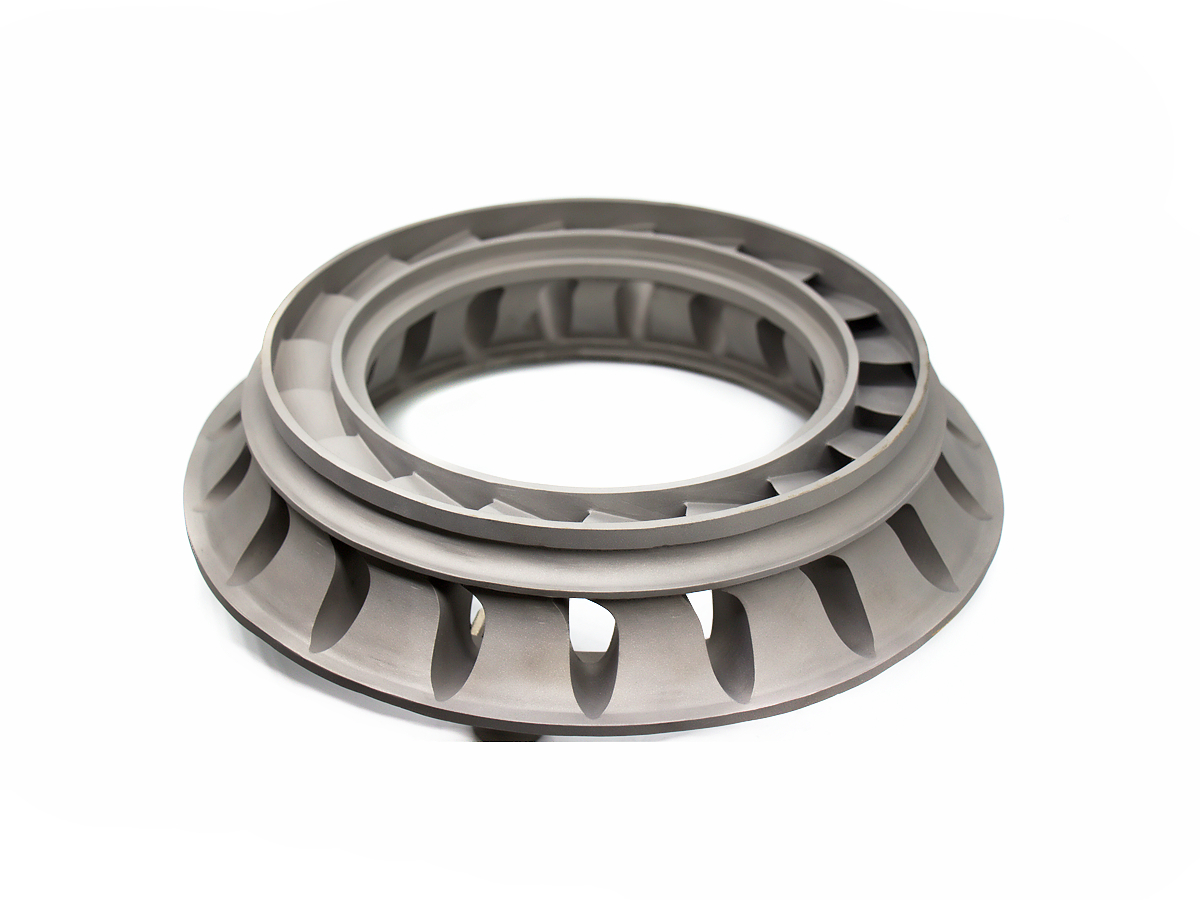Superalloy 3D Printing: High-Performance Metal Parts for Extreme Conditions
Introduction to Superalloy 3D Printing
Superalloys are engineered to withstand extreme conditions, offering exceptional properties like high-temperature resistance up to 1200°C, superior corrosion resistance, and excellent wear resistance. These alloys are essential for demanding aerospace, automotive, and energy applications. Advanced 3D printing technologies like Direct Metal Laser Sintering (DMLS) and Selective Laser Melting (SLM) produce superalloy components with high precision and strength.
At Neway 3D Printing, we offer custom superalloy 3D printing services, using materials such as Inconel 625 and Hastelloy C-276 to create parts capable of performing under extreme mechanical and thermal stress, ensuring superior performance for complex and mission-critical components. Our superalloy options are designed for high performance in even the most challenging environments.
Material Performance Matrix
Material | Temperature Resistance (°C) | Corrosion Resistance (ASTM B117 Salt Spray) | Wear Resistance (Pin-on-Disc Test) | Ultimate Tensile Strength (MPa) | Yield Strength (MPa) | Application |
|---|---|---|---|---|---|---|
1000 | Excellent (1000 hours) | High (Coefficient of friction: 0.5) | 1034 | 448 | Aerospace, Chemical Processing | |
1150 | Superior (2000 hours) | High (Coefficient of friction: 0.4) | 1034 | 690 | Chemical, Marine, High-Pressure Systems | |
1200 | Excellent (3000 hours) | Very High (CoF: 0.35) | 1234 | 965 | Aerospace, Power Generation | |
980 | Good (500 hours) | High (CoF: 0.6) | 1276 | 930 | Aerospace, Gas Turbine Engines |
Material Selection Guide for Superalloy 3D Printing
When selecting superalloy materials for 3D printing, key factors to consider include:
Temperature Resistance: Materials such as Haynes 188 (1200°C) and Inconel 625 (1000°C) are ideal for high-temperature applications like turbine blades.
Corrosion Resistance: Hastelloy C-276 (Superior at 2000 hours in ASTM B117 test) provides excellent protection for environments with aggressive chemicals.
Wear Resistance: Superalloys like Inconel 625 offer high resistance to abrasive conditions, suitable for parts exposed to wear (Pin-on-disc test with a CoF of 0.5).
Strength Requirements: High-strength materials such as Inconel 718 (1276 MPa tensile strength) are optimal for critical load-bearing applications.
Process Category Matrix for Superalloy 3D Printing
Process | Material Compatibility | Build Speed | Precision | Surface Finish |
|---|---|---|---|---|
Inconel, Hastelloy, Haynes | Moderate (30-60 mm/h) | High (±0.1mm) | Smooth to Fine | |
Inconel, Hastelloy, Inconel 718 | High (50-100 mm/h) | Very High (±0.05mm) | Fine (Ra < 10 µm) | |
Inconel 718, Haynes 188 | Low (5-25 mm/h) | High (±0.1mm) | Rough (Ra > 20 µm) | |
Inconel 718, Hastelloy | High (50-100 mm/h) | Very High (±0.05mm) | Fine (Ra < 10 µm) |
Process Performance Insights:
Powder Bed Fusion (PBF): Known for moderate build speed and high precision. Ideal for parts that require intricate details but are less critical in surface finish. Commonly used in aerospace applications where geometries are complex.
Direct Metal Laser Sintering (DMLS): Provides superior precision and excellent surface finishes. This process offers fine resolution (Ra < 10 µm), making it ideal for components requiring tight tolerances and smooth surfaces, such as medical implants and turbine blades.
Electron Beam Melting (EBM): Best suited for parts that require high thermal resistance, such as aerospace components. The process is slower, and the surface finish tends to be rougher, but it provides excellent material strength, making it suitable for critical applications.
Selective Laser Melting (SLM): Offers high-speed production with exceptional precision, often used in aerospace for structural components. It delivers fine surface finishes and is optimal for parts requiring high strength and high detail.
Process Selection Guide for Superalloy Parts
Powder Bed Fusion (PBF): Best for intricate geometries and high precision. Ideal for aerospace and automotive components where complex designs and detailed structures are needed.
Direct Metal Laser Sintering (DMLS): Offers superior precision and surface finish, making it suitable for parts with tight tolerances and high mechanical strength requirements.
Electron Beam Melting (EBM): Suitable for parts requiring high thermal resistance, especially for aerospace and energy applications, although it results in a rougher finish.
Selective Laser Melting (SLM): Offers high-speed printing and fine details, often used for high-performance turbine blades and structural components in aerospace.
Case In-Depth Analysis: Superalloy 3D Printed Turbine Blades
Aerospace Industry: We produced turbine blades using Inconel 718 through DMLS for a high-profile aerospace client. The parts required resistance to extreme temperatures and precision manufacturing. The DMLS process created complex internal cooling channels, improving engine efficiency. These blades demonstrated superior performance, including excellent fatigue resistance and the ability to endure temperatures up to 980°C.
Chemical Processing Industry: We used Hastelloy C-276 in a PBF process for a marine-based chemical processing company to create highly resistant chemical reaction vessels. The material's exceptional corrosion resistance, even in aggressive environments, made it ideal for the application. The parts achieved high strength and excellent resistance to corrosive wear, ensuring long-term operational reliability in marine conditions.
FAQs
What is the best superalloy material for aerospace applications?
How does Direct Metal Laser Sintering (DMLS) compare to other 3D printing processes?
What are the benefits of using Hastelloy for chemical processing parts?
How does 3D printing with superalloys improve manufacturing efficiency?
What industries benefit most from superalloy 3D printed parts?

